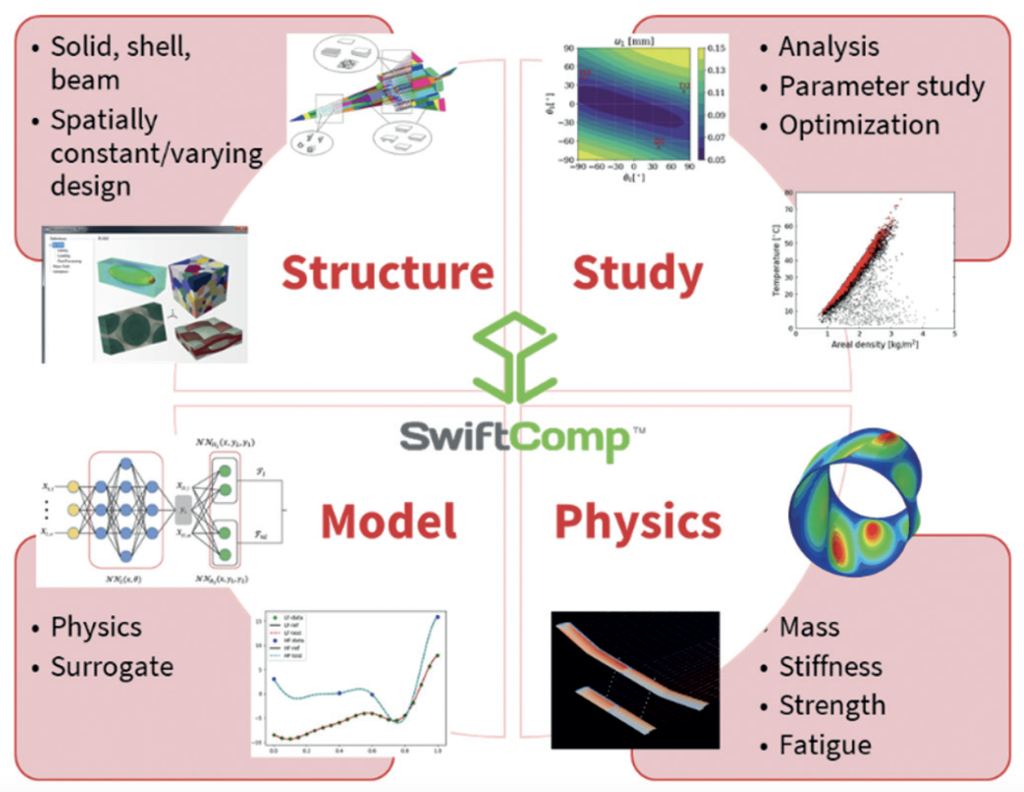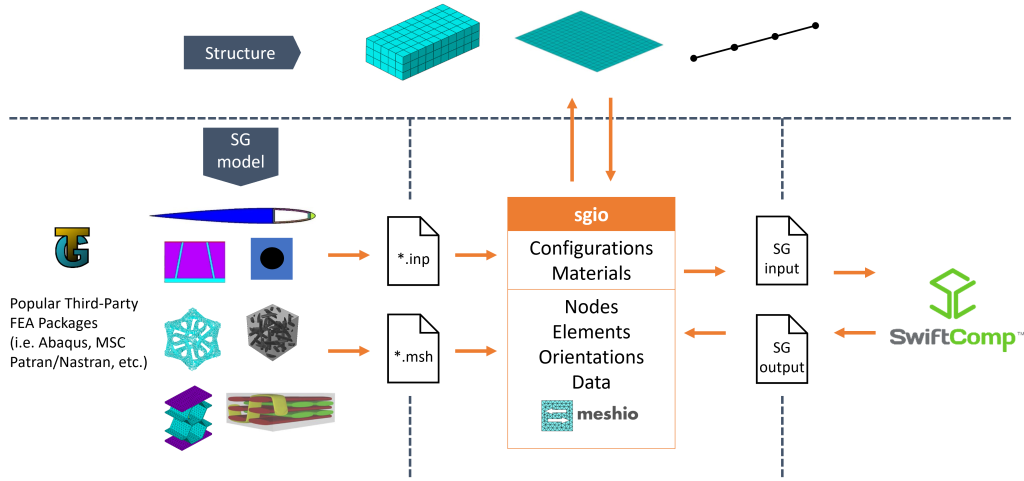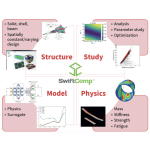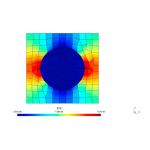New DATC Simulation Technology for Tailorable Composites Featured in JEC Composites Magazine
WEST LAFAYETTE, Ind.- There is an urgent need for innovative material concepts for exploration vehicles, space habitats, and other space hardware. Advanced tailorable composites and hybrid material systems (TCHM) are good candidates. To exploit their full potential, suitable theories and design methodologies need to be developed and fully integrated into commercially-available design tools. With the support of NASA funding, AnalySwift and its partners have developed a design tool to address this gap in simulation capabilities.
JEC Composites Magazine recently published and article about AnalySwift’s work in this area. The full article, DATC: a multiscale design framework for advanced tailorable composites and hybrid material systems, is available in the simulation section of Issue 154 (January-February 2024) pgs 55-59, and it is also available for download as a PDF here.
According to the article by AnalySwift Research Scientist, Dr. Su Tian, TCHM such as laminates with steered tows and variable thickness, and metamaterials, can leverage a broad variety of materials, including metallic alloys, short and/or continuous fibre reinforcements and a variety of matrices. However, the capabilities of existing design tools are greatly lagging behind evolving manufacturing techniques, such as automated fibre placement (AFP) and 3D printing.
The theories underpinning most existing design tools are the classical lamination theory (CLT) for structural analysis and the rule of mixture (ROM) for micromechanical analysis, both of which work for laminates made of unidirectional fibre-reinforced composites (UDFRCs). A design process is usually guided by semi-empirical rules applicable to UDFRCs, e.g. consecutive plies with the same fibre angle should not exceed a certain number, and the fibre angle difference between two adjacent plies should not exceed a certain value. Some tools idealise composite structures as black aluminium and are only applicable to quasi-isotropic stacking sequences.
The development of the Design Tool for Advanced Tailorable Composites and Hybrid Material Systems (DATC) framework is an effort by AnalySwift, LLC, Purdue University, and the University of Texas at Arlington with funding from NASA. At its core, AnalySwift’s SwiftComp software provides constitutive modelling capabilities for these advanced materials. This work was also supported by Elevate Ventures, Inc. and Indiana Economic Development Corporation (IEDC).
Framework overview
This framework is devised to empower engineers in parametrising complex structures, allocating hybrid materials, linking structural analysis to external FEA tools, and systematically seeking out optimal designs. The main capabilities are grouped in four aspects (Figure 1):
- handling spatially-varying microstructural design and different structural models, including solid, plate/shell, and beam;
- using either physical or surrogate models such as neural networks for analysis;
- considering various physical behaviours such as mechanical, thermal, and electrical;
- carrying out a single point design analysis or iterative design evaluations for parametric study or optimisation.

This design tool can be used at three levels, based on the user’s need (see full article for further figures). At the core level, one can use the basic functionality (constitutive modelling) and integrate it into the user’s own FEA code and design tool. At the intermediate level, users can form the complete workflow of a point design analysis and make it callable in the user’s own optimisation iteration. At the outmost level, everything is done in the present framework by integrating all the necessary ingredients, such as global structural analysis and custom scripts for data processing, for various design studies.

Conclusion
DATC, a framework developed for the multiscale modelling, analysis, and design of advanced tailorable composites, is a tool based on MSG, an efficient high-fidelity constitutive modelling method for structural models including solids, plates/shells and beams. Functionalities were developed on top of MSG to achieve multiscale parameterisation, spatially-varying design, and automated hierarchical (de)homogenisation of microstructures. In addition to mechanical performance, coupled multi-physical analyses are also available. The open architecture of this framework allows the integration of custom tools and hence even broader design requirements, including global structural analysis by commercial tools, complex microstructural designs, custom analysis and data processing steps, and user-friendly GUI plug-ins in Abaqus and Nastran.
Please see the full article and details of the research at the link above or visit us at JEC World 2024 on March 5-7, 2024, in Booth Q52b. Please contact AnalySwift for more details or to try DATC.










